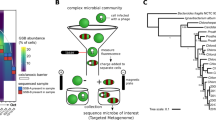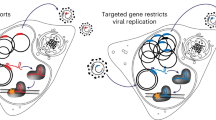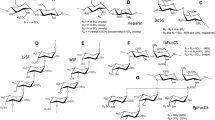Abstract
Aim:
To investigate the mode of action of WSS45, one sulfated derivative of an α-D-glucan from the Gastrodia elata Bl, on the multiplication cycle of dengue virus serotype 2 (DV2), including initial infection and intracellular replication.
Methods:
Virus multiplication in BHK cells were monitored by qRT-PCR, plaque reduction assay, and flow cytometry. Initial virus infection was dissected into adsorption and penetration steps by converting temperature and treating by acid glycine. Surface bound virions were detected by immunofluorescence staining for Evelope protein.
Results:
WSS45 effectively inhibited DV2 infection in BHK cells with an EC50 value of 0.68±0.17 μg/mL , mainly interfered with virus adsorption, in a very early stage of the virus cycle. However, WSS45 showed no viricidal effect. Moreover, WSS45 could increase the detaching of virus from cell surface in BHK cell line.
Conclusion:
WSS45 exerted potent inhibitory effect on DV2 through interfering with the interaction between viruses and targeted cells. This activity was related to its molecular size.
Similar content being viewed by others
Log in or create a free account to read this content
Gain free access to this article, as well as selected content from this journal and more on nature.com
or
References
Gubler DJ . Epidemic dengue/dengue hemorrhagic fever as a public health, social and economic problem in the 21st century. Trends Microbiol 2002; 10: 100–3.
Lindenbach BD, Rice CM . Molecular biology of flaviviruses. Adv Virus Res 2003; 59: 23–61.
Chen Y, Maguire T, Hileman RE, Fromm JR, Esko JD, Linhardt RJ, et al. Dengue virus infectivity depends on envelope protein binding to target cell heparan sulfate. Nat Med 1997; 3: 866–71.
Crill WD, Roehrig JT . Monoclonal antibodies that bind to domain III of dengue virus E glycoprotein are the most efficient blockers of virus adsorption to Vero cells. J Virol 2001; 75: 7769–73.
Hase T, Summers PL, Eckels KH . Flavivirus entry into cultured mosquito cells and human peripheral blood monocytes. Arch Virol 1989; 104: 129–43.
Hung SL, Lee PL, Chen HW, Chen LK, Kao CL, King CC . Analysis of the steps involved in Dengue virus entry into host cells. Virology 1999; 257: 156–67.
Buck CB, Thompson CD, Roberts JN, Muller M, Lowy DR, Schiller JT . Carrageenan is a potent inhibitor of papillomavirus infection. PLoS Pathog 2006; 2: e69.
Zhang M, Cheung PC, Ooi VE, Zhang L . Evaluation of sulfated fungal beta-glucans from the sclerotium of Pleurotus tuber-regium as a potential water-soluble anti-viral agent. Carbohydr Res 2004; 339: 2297–301.
Qiu H, Tang W, Tong X, Ding K, Zuo J . Structure elucidation and sulfated derivatives preparation of two alpha-D-glucans from Gastrodia elata Bl. and their anti-dengue virus bioactivities. Carbohydr Res 2007; 342: 2230–6.
Malewicz B, Jenkin HM . Development of dengue virus plaques under serum-free overlay medium. J Clin Microbiol 1979; 9: 609–14.
Jindadamrongwech S, Thepparit C, Smith DR . Identification of GRP 78 (BiP) as a liver cell expressed receptor element for dengue virus serotype 2. Arch Virol 2004; 149: 915–27.
Navarro-Sanchez E, Altmeyer R, Amara A, Schwartz O, Fieschi F, Virelizier JL, et al. Dendritic-cell-specific ICAM3-grabbing non-integrin is essential for the productive infection of human dendritic cells by mosquito-cell-derived dengue viruses. EMBO Rep 2003; 4: 723–8.
Gonzalez-Gronow M, Selim MA, Papalas J, Pizzo SV . GRP78: a multifunctional receptor on the cell surface. Antioxid Redox Signal 2009; 11: 2299–306.
Chavez-Salinas S, Ceballos-Olvera I, Reyes-Del Valle J, Medina F, Del Angel RM . Heat shock effect upon dengue virus replication into U937 cells. Virus Res 2008; 138: 111–8.
Esko JD, Selleck SB . Order out of chaos: assembly of ligand binding sites in heparan sulfate. Annu Rev Biochem 2002; 71: 435–71.
Aoki C, Hidari KI, Itonori S, Yamada A, Takahashi N, Kasama T, et al. Identification and characterization of carbohydrate molecules in mammalian cells recognized by dengue virus type 2. J Biochem 2006; 139: 607–14.
Lescar J, Roussel A, Wien MW, Navaza J, Fuller SD, Wengler G, et al. The fusion glycoprotein shell of Semliki Forest virus: an icosahedral assembly primed for fusogenic activation at endosomal pH. Cell 2001; 105: 137–48.
Modis Y, Ogata S, Clements D, Harrison SC . A ligand-binding pocket in the dengue virus envelope glycoprotein. Proc Natl Acad Sci USA 2003; 100: 6986–91.
Mueller DS, Kampmann T, Yennamalli R, Young PR, Kobe B, Mark AE . Histidine protonation and the activation of viral fusion proteins. Biochem Soc Trans 2008; 36: 43–5.
Acknowledgements
This work was supported by the “DENFRAME” project of European Union (EC Contract Number 517711), National Science & Technology Major Project “Key New Drug Creation and Manufacturing Program” (2009ZX09301-001), and by Science & Technology Commission of Shanghai Municipality, China (No 08XD14053, 08410708900).
Author information
Authors and Affiliations
Corresponding authors
Rights and permissions
About this article
Cite this article
Tong, Xk., Qiu, H., Zhang, X. et al. WSS45, a sulfated α-D-glucan, strongly interferes with Dengue 2 virus infection in vitro. Acta Pharmacol Sin 31, 585–592 (2010). https://doi.org/10.1038/aps.2010.29
Received:
Accepted:
Published:
Issue date:
DOI: https://doi.org/10.1038/aps.2010.29
Keywords
This article is cited by
-
Melatonin Receptors Agonistic Activities of Phenols from Gastrodia elata
Natural Products and Bioprospecting (2019)
-
Isothiafludine, a novel non-nucleoside compound, inhibits hepatitis B virus replication through blocking pregenomic RNA encapsidation
Acta Pharmacologica Sinica (2014)
-
Discovering novel anti-HCV compounds with inhibitory activities toward HCV NS3/4A protease
Acta Pharmacologica Sinica (2014)
-
In vitro anti-canine distemper virus activity of fucoidan extracted from the brown alga Cladosiphon okamuranus
VirusDisease (2014)
-
A brief review on dengue molecular virology, diagnosis, treatment and prevalence in Pakistan
Genetic Vaccines and Therapy (2012)



